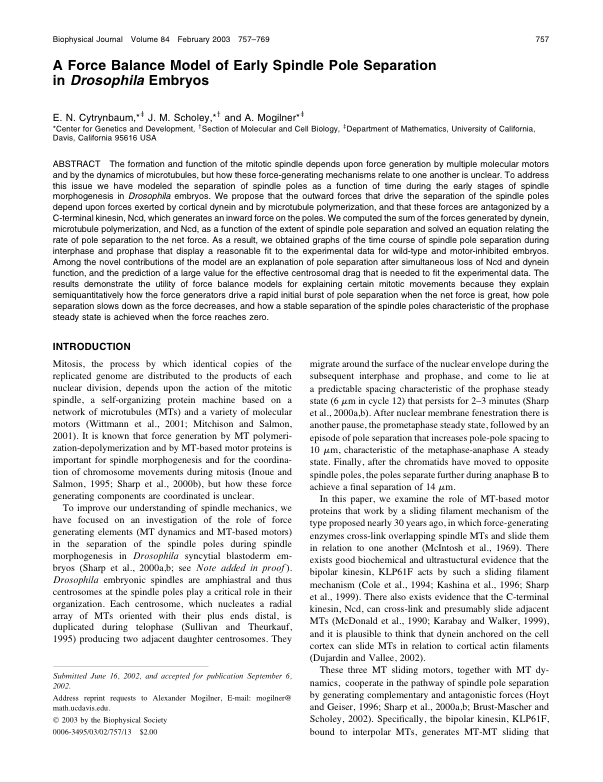Publications
| Abstract | The formation and function of the mitotic spindle depends upon force generation by multiple molecular motors and by the dynamics of microtubules, but how these force-generating mechanisms relate to one another is unclear. To address this issue we have modeled the separation of spindle poles as a function of time during the early stages of spindle morphogenesis in Drosophila embryos. We propose that the outward forces that drive the separation of the spindle poles depend upon forces exerted by cortical dynein and by microtubule polymerization, and that these forces are antagonized by a C-terminal kinesin, Ncd, which generates an inward force on the poles. We computed the sum of the forces generated by dynein, microtubule polymerization, and Ncd, as a function of the extent of spindle pole separation and solved an equation relating the rate of pole separation to the net force. As a result, we obtained graphs of the time course of spindle pole separation during interphase and prophase that display a reasonable fit to the experimental data for wild-type and motor-inhibited embryos. Among the novel contributions of the model are an explanation of pole separation after simultaneous loss of Ncd and dynein function, and the prediction of a large value for the effective centrosomal drag that is needed to fit the experimental data. The results demonstrate the utility of force balance models for explaining certain mitotic movements because they explain semiquantitatively how the force generators drive a rapid initial burst of pole separation when the net force is great, how pole separation slows down as the force decreases, and how a stable separation of the spindle poles characteristic of the prophase steady state is achieved when the force reaches zero. |
|---|---|
| A link to the paper |
 Biophys J, 84(2):757-769, 2003. |